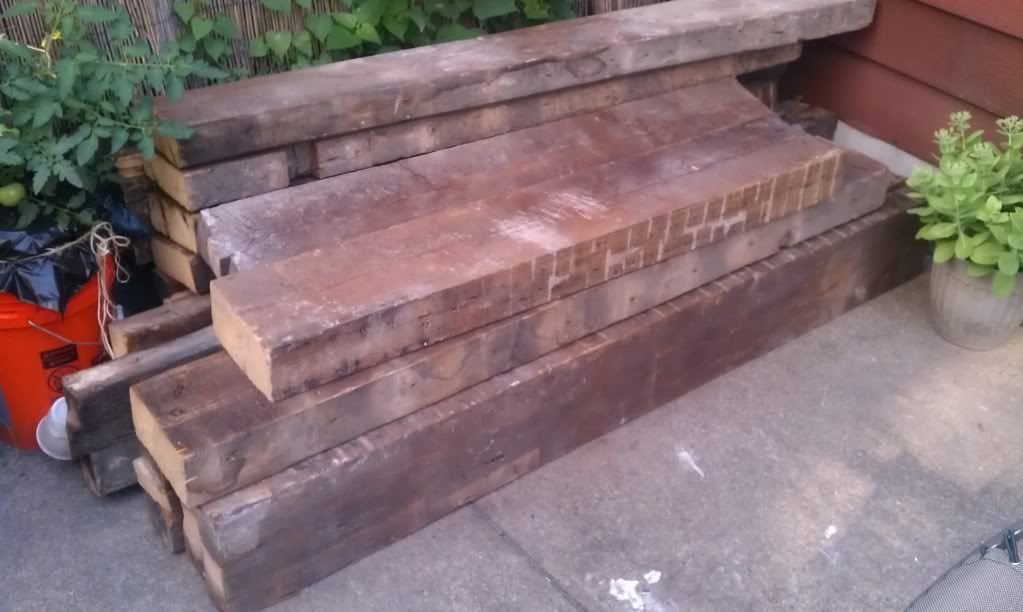Hello,
I'd like to build myself a desk out of this amazing floor joists I saved from a near by house demolition, where they removed all the floor joists from a 100yr+ house. This is the wood I have:
![Image]()
The joists range from 3-5" thick, 7-9" wide, and 4-6 ft long.
My plan is rather simple: cut three pieces at 43" which will give me a 27" (I will use pieces which are 9" wide)) by 43" desk. I will then cut three holes in each of those pieces so I can fit a threaded rod through them. I will bolt and glue them together. For the legs I will use black pipes and fittings to complete the "rustic diy look". I need some help with this:
I'd like to build myself a desk out of this amazing floor joists I saved from a near by house demolition, where they removed all the floor joists from a 100yr+ house. This is the wood I have:

The joists range from 3-5" thick, 7-9" wide, and 4-6 ft long.
My plan is rather simple: cut three pieces at 43" which will give me a 27" (I will use pieces which are 9" wide)) by 43" desk. I will then cut three holes in each of those pieces so I can fit a threaded rod through them. I will bolt and glue them together. For the legs I will use black pipes and fittings to complete the "rustic diy look". I need some help with this:
- I want to try to save the beautiful colors and imperfections of the wood on the one hand but I also want to have a surface that will be nice to the touch (I'm a student-I will use this table a lot). Is it possible to achieve?
- If it is possible to do (to the above question) then how should I do that? a step by step explanation will be much appreciated.
- If it isn't possible and I should completely sand it down, then how do I then finish it?
- Do you think that it will be hard for me to drill those holes accurately to allow the rod to slide through all the pieces together? If yes, then what else can I do to hold those pieces together without adding to it's size.








